Overview
The article serves as a comprehensive guide on the digitization of land records, underscoring the critical importance of enhancing accessibility, protecting historical documents, and minimizing costs associated with traditional property management. It delineates a methodical step-by-step process that encompasses:
- The preparation of materials
- The selection of suitable tools
- The navigation of potential challenges
- The implementation of safeguards to maintain the integrity and security of digitized records
This approach significantly enhances overall efficiency in land record management.
Introduction
The digitization of land records is revolutionizing the real estate landscape, providing unprecedented access to crucial information while protecting historical documents from deterioration. This guide explores the essential steps involved in digitizing land records, emphasizing how title researchers can optimize their processes and boost efficiency through advanced technologies. However, as organizations adopt this digital transformation, they frequently encounter resistance and technical challenges. What strategies can be employed to facilitate a seamless transition and fully leverage the advantages of digitization?
Understand the Importance of Digitizing Land Records
It is essential to understand how to digitize land records for several reasons.
-
It improves accessibility by demonstrating how to digitize land records, enabling title researchers to swiftly obtain information without searching through physical files. With Parse AI's advanced machine learning tools, document processing becomes more efficient, facilitating faster extraction of critical information from title documents. Furthermore, these tools offer features such as interactive labeling and OCR technology, which further streamline workflows.
-
Understanding how to digitize land records safeguards historical documents, shielding them from deterioration and loss.
-
Understanding how to digitize land records decreases the time and expenses linked to conventional property management, ultimately enhancing precision in transactions and ensuring adherence to legal standards.
By utilizing Parse AI's automated content processing features, organizations can benefit from customized subscription options, including monthly, annual, and pay-as-you-go plans, designed to satisfy the needs of all parties involved in real estate transactions.
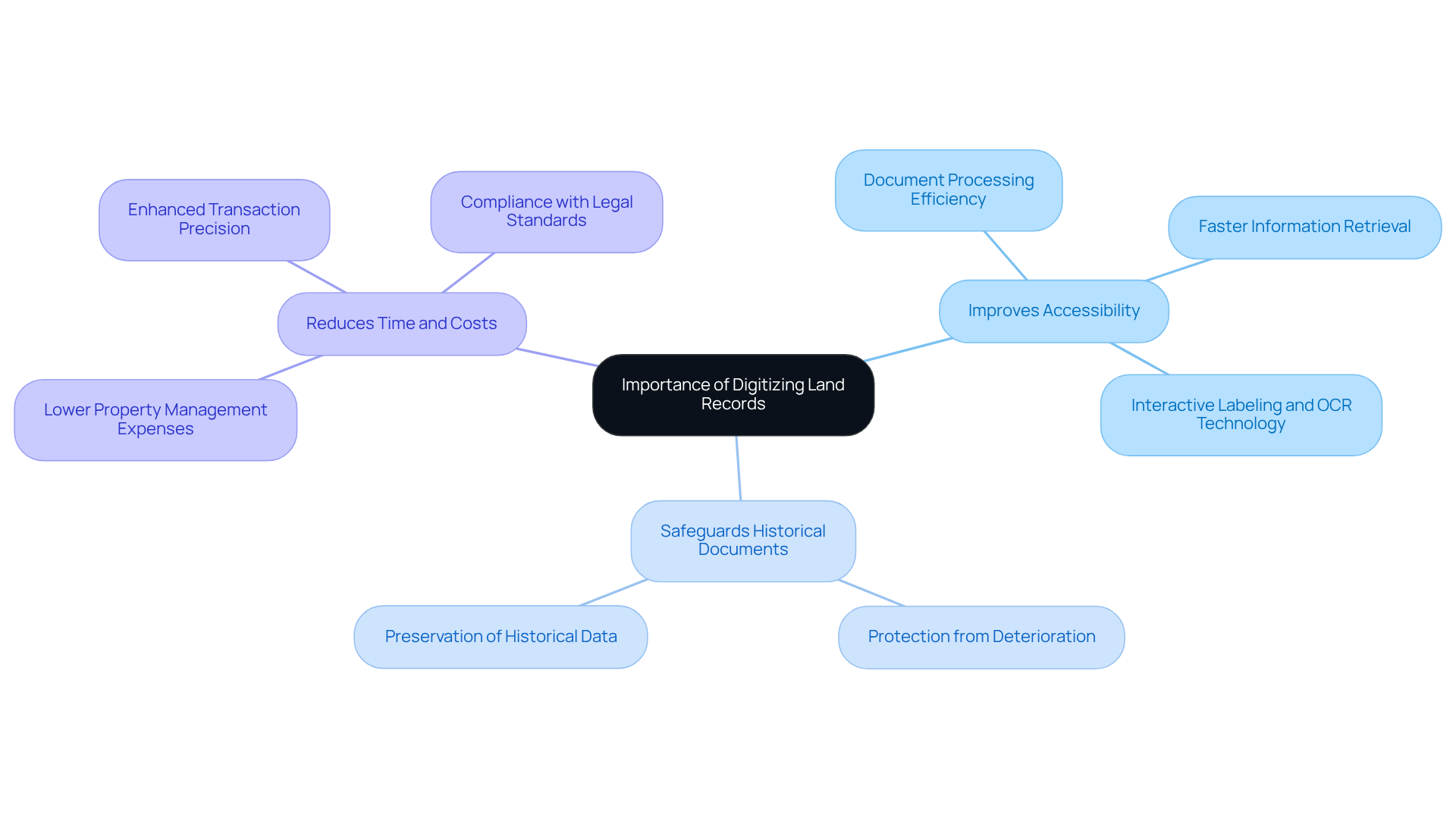
Prepare for the Digitization Process
To efficiently prepare for how to digitize land records, it is essential to begin with a comprehensive inventory of all materials. Classifying these documents by type, age, and condition simplifies the process significantly.
Furthermore, evaluating the physical condition of each document is crucial; any damaged materials should be repaired prior to scanning to ensure quality.
In addition, deciding on the final storage solution for the digitized files is vital, whether it involves utilizing a cloud-based system or an internal database.
Establishing a clear indexing system is imperative for understanding how to digitize land records, as it will facilitate easy retrieval of digital records once scanning is complete.
Implementing these best practices not only enhances efficiency but also ensures the integrity and accessibility of vital land data.
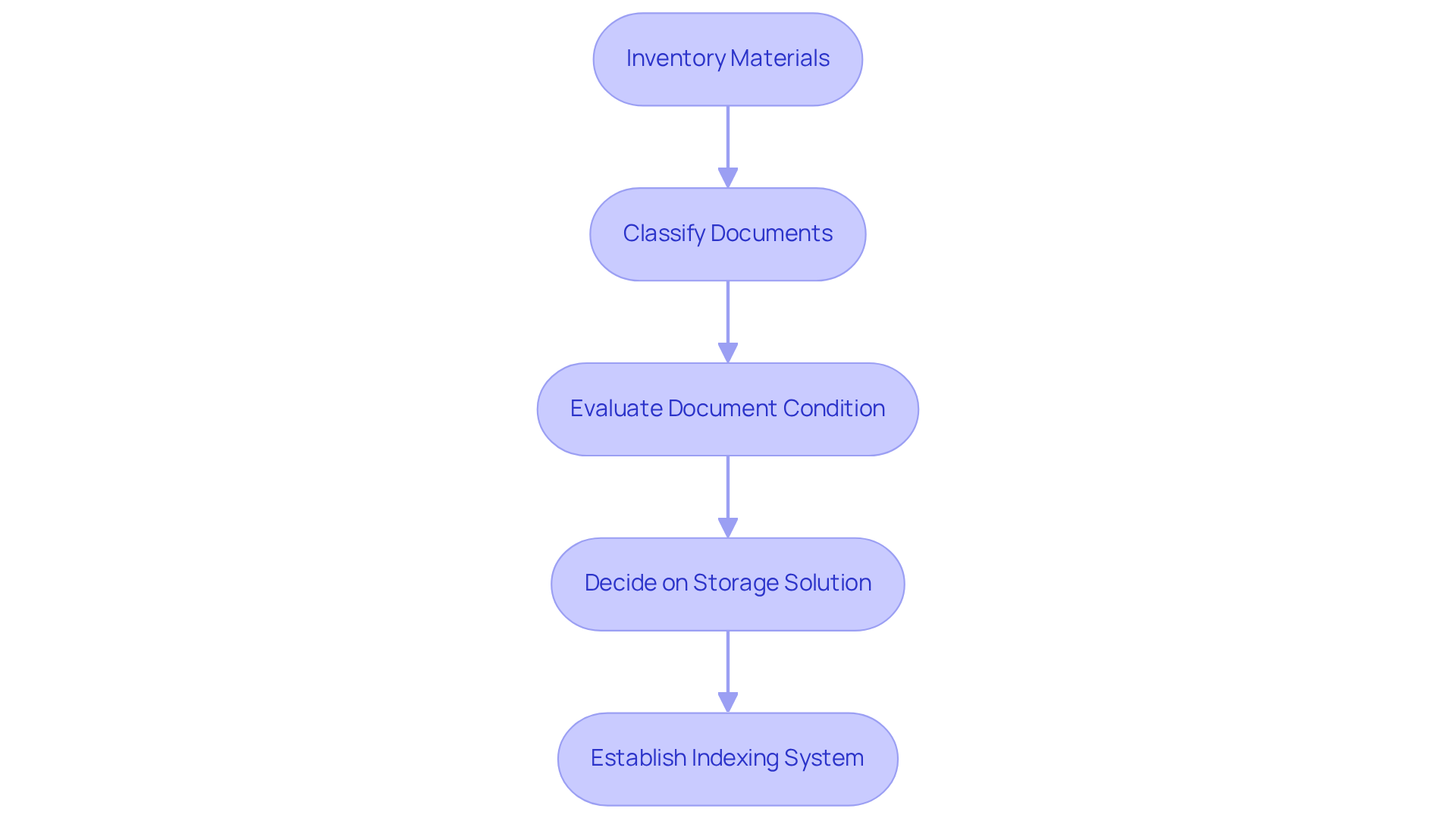
Select Appropriate Tools and Technologies for Digitization
When selecting tools for digitization, it is crucial to consider the types of materials you will be scanning. For substantial volumes of files, a high-speed document scanner is recommended, whereas flatbed scanners are ideal for delicate or oversized documents. Furthermore, investing in Optical Character Recognition (OCR) software is essential to convert scanned images into searchable text. Ensure that the selected software is compatible with the indexing system you established earlier. Finally, consider cloud-based solutions for storage to enhance both accessibility and security.
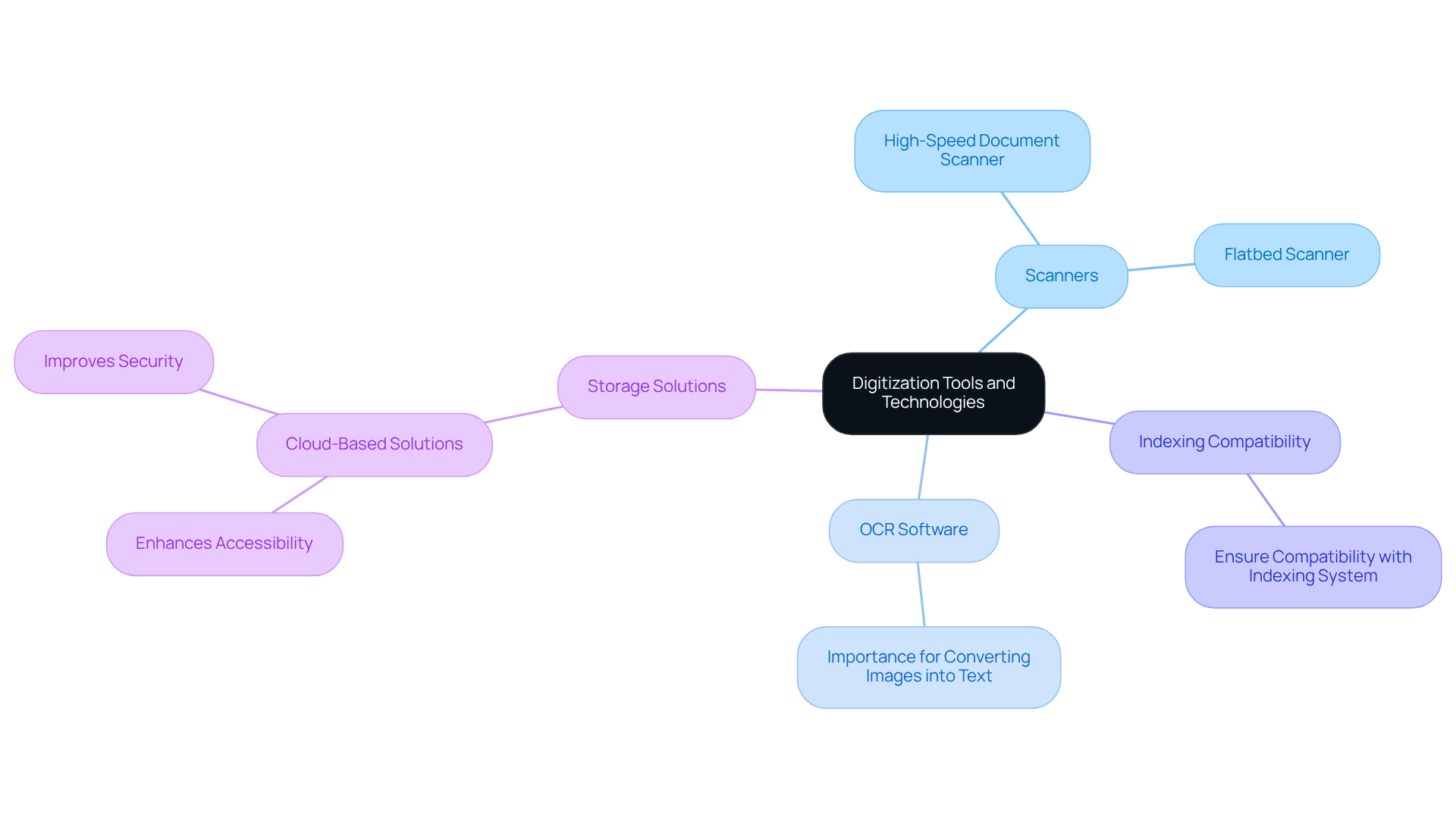
Navigate Challenges in the Digitization Process
The digitization of land records is a critical advancement, yet it often encounters challenges, particularly due to resistance from staff who are accustomed to traditional methods of how to digitize land records. To effectively address this issue, it is imperative to implement comprehensive training sessions that familiarize employees with new technologies and processes. For instance, training programs should include:
- Practical workshops focused on the use of scanning tools and software
- Essentials of information management and security
Furthermore, establishing a troubleshooting protocol for technical issues is essential to minimize downtime and maintain workflow efficiency.
Regular communication regarding the benefits of digitization—such as increased efficiency, reduced administrative costs, and enhanced data accessibility—can significantly foster a positive attitude among stakeholders. Highlighting successful case studies, such as the substantial progress achieved under the 'Digital India Land Records Modernization Programme,' serves as a compelling motivating example of how to digitize land records, with over 94% of rights documentation digitized. By emphasizing the long-term advantages and providing ongoing support, organizations can effectively overcome resistance and ensure a smoother transition to digital systems.
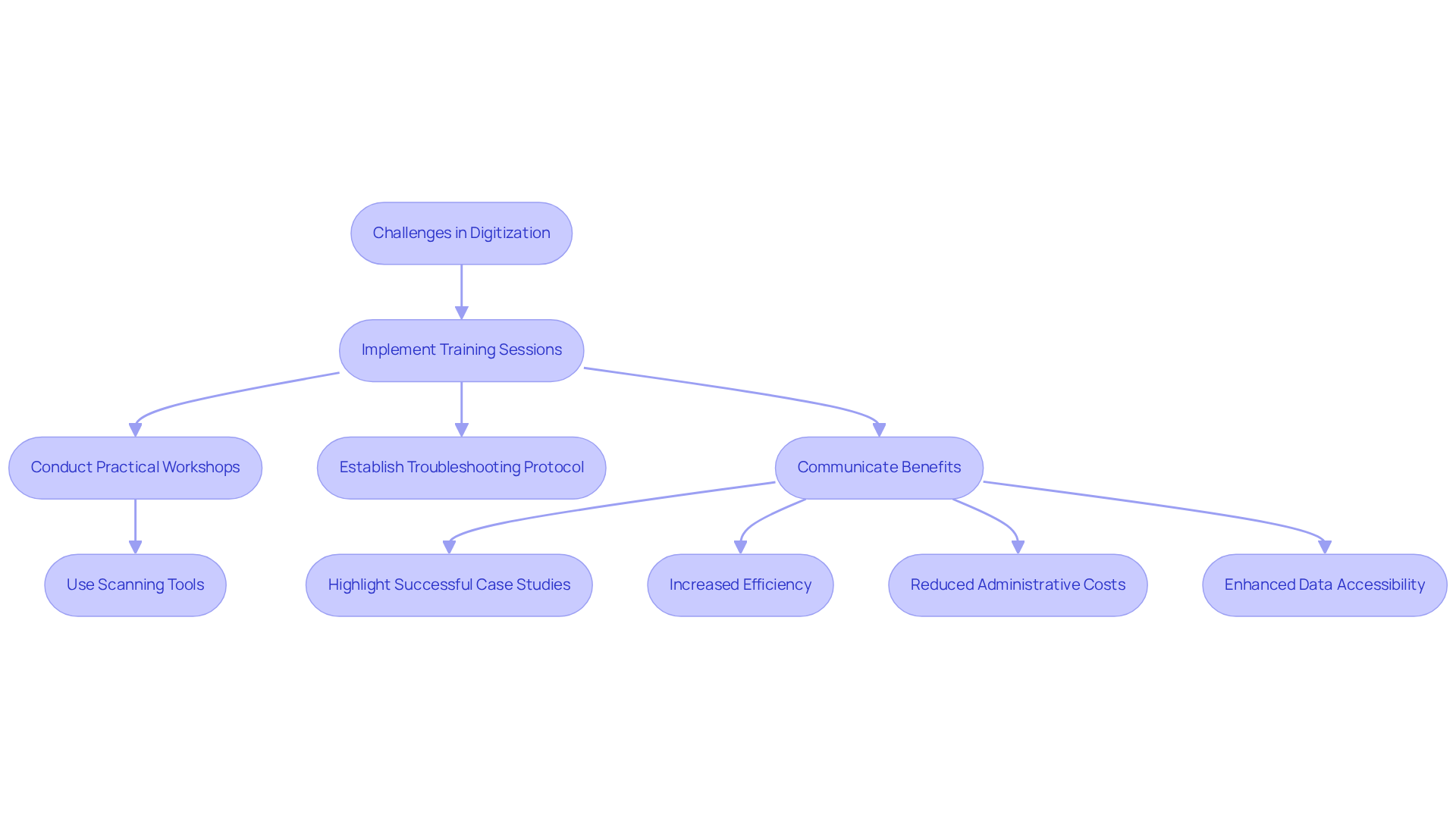
Safeguard and Maintain Digitized Land Records
To effectively protect digitized land records, it is essential to understand how to digitize land records and implement a robust backup system that incorporates both local and cloud storage solutions. Frequent software updates are crucial, as they safeguard against security weaknesses and assist in adhering to evolving privacy protection regulations. Stringent access controls must be established to restrict who can view or modify information, while regular audits guarantee the integrity of digital files.
Furthermore, creating a comprehensive disaster recovery strategy is vital to address potential information loss situations, ensuring that your records remain safe and accessible over time. With the average expense of a breach reaching $4.45 million in 2023, prioritizing these measures is not only prudent but critical for preserving trust and ensuring operational continuity.
Additionally, leveraging advanced document processing solutions like the ParseAI platform can significantly enhance efforts related to how to digitize land records. With its OCR technology and interactive labeling features, ParseAI demonstrates how to digitize land records by facilitating efficient extraction and management of vital information, streamlining the runsheet creation process while ensuring that data remains organized and easily accessible, all while upholding security protocols.
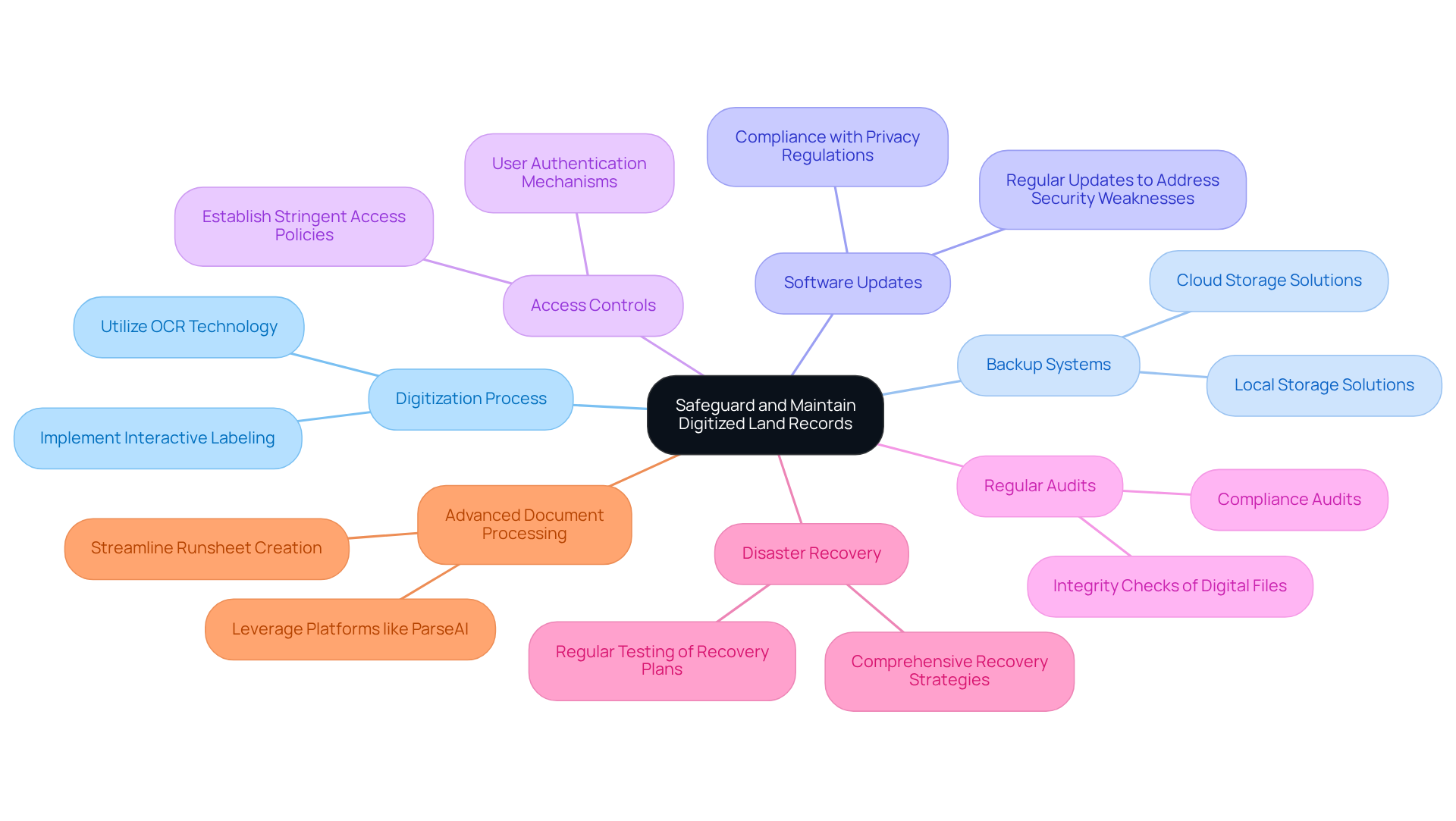
Conclusion
Digitizing land records is a transformative process that greatly enhances accessibility, preserves historical documents, and streamlines property management. By understanding how to effectively digitize these records, title researchers can significantly improve their workflow, ensuring that vital information is readily available while safeguarding against the deterioration of physical documents.
The article outlines several key steps in this digitization journey, including:
- The importance of thorough preparation
- Selecting appropriate tools and technologies
- Navigating potential challenges
It emphasizes the need for:
- A comprehensive inventory
- Robust indexing systems
- The implementation of effective training programs to overcome resistance to change
Furthermore, safeguarding digitized records through regular backups and stringent access controls is crucial for maintaining data integrity and security.
Ultimately, the digitization of land records is not just a technical upgrade; it represents a critical evolution in how property information is managed. By embracing these practices and leveraging advanced technologies like Parse AI, organizations can enhance efficiency, reduce costs, and ensure compliance with legal standards. This commitment to digitization not only benefits current operations but also lays a solid foundation for future advancements in land record management.
Frequently Asked Questions
Why is it important to digitize land records?
Digitizing land records improves accessibility for title researchers, safeguards historical documents from deterioration, decreases time and expenses related to property management, enhances precision in transactions, and ensures adherence to legal standards.
How does Parse AI assist in the digitization of land records?
Parse AI provides advanced machine learning tools for efficient document processing, faster extraction of critical information, interactive labeling, and OCR technology to streamline workflows.
What are the benefits of using automated content processing features from Parse AI?
Organizations can benefit from customized subscription options, including monthly, annual, and pay-as-you-go plans, tailored to meet the needs of all parties involved in real estate transactions.
What steps should be taken to prepare for the digitization process?
To prepare for digitization, one should start with a comprehensive inventory of all materials, classify documents by type, age, and condition, evaluate the physical condition of each document, decide on a final storage solution, and establish a clear indexing system.
Why is it important to evaluate the physical condition of documents before scanning?
Evaluating the physical condition is crucial to ensure that any damaged materials are repaired prior to scanning, which guarantees the quality of the digitized files.
What are the options for storing digitized land records?
Digitized files can be stored in a cloud-based system or an internal database, depending on the organization's needs.
How does establishing a clear indexing system benefit the digitization process?
A clear indexing system facilitates easy retrieval of digital records once scanning is complete, enhancing efficiency and ensuring the accessibility of vital land data.




